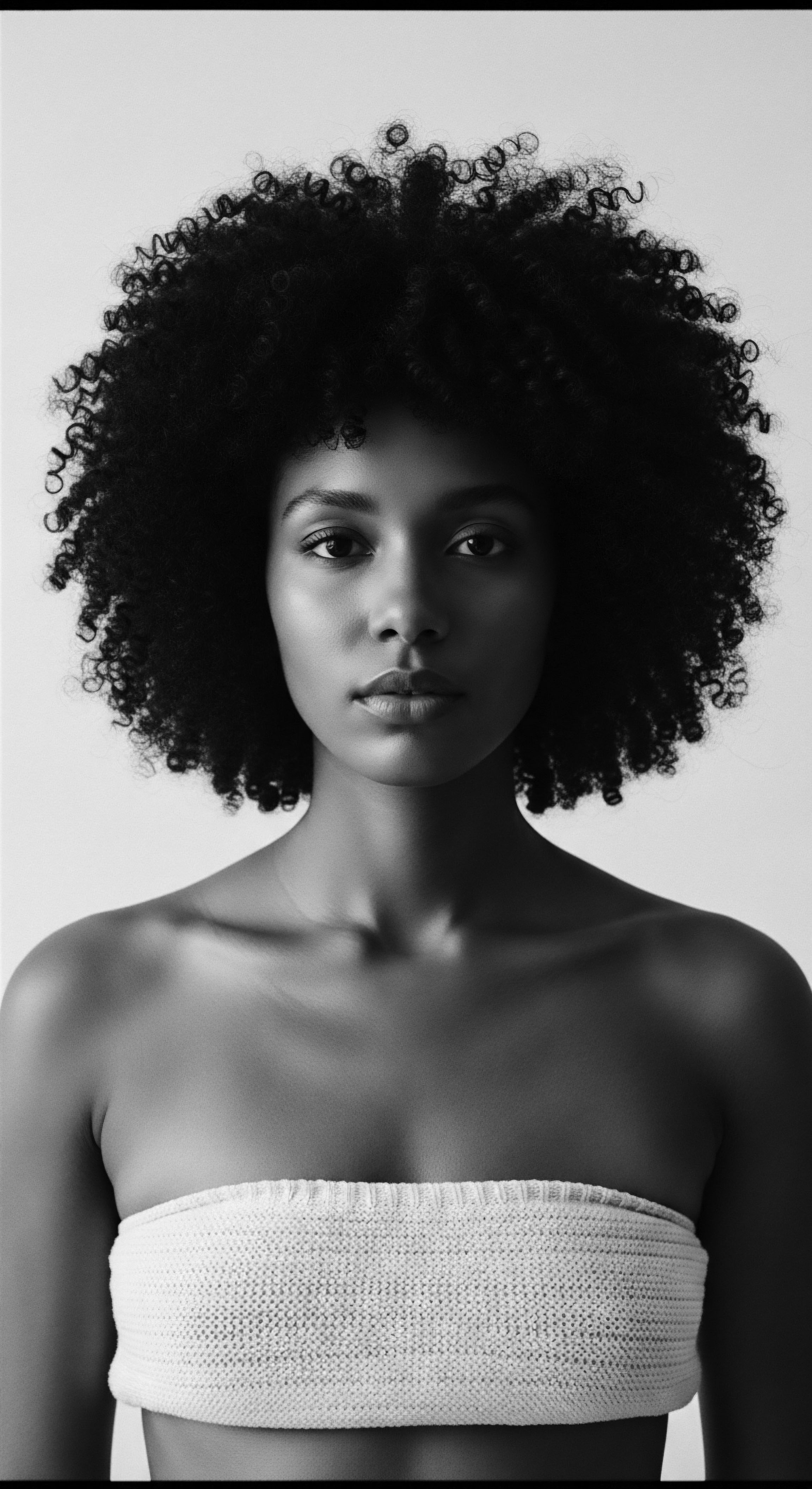
Roots
For those of us whose lineage is etched in the vibrant coils, waves, and zig-zags of textured hair, there lies a profound connection to generations past. Our strands are not merely protein filaments; they are living archives, whispering stories of resilience, adornment, and belonging. To understand what biological structures form textured hair is to begin a pilgrimage back to the source, to the very elemental truths that shaped our crowns and, in turn, were shaped by the wisdom of our ancestors. It is to trace the intricate ballet of cells that culminates in the breathtaking diversity we celebrate today.

The Follicle’s Ancestral Blueprint
At the deepest origin of every strand resides the hair follicle, a tiny, dynamic organ nestled within the skin. For textured hair, this follicle possesses a distinctive, often elliptical or flattened shape, unlike the rounder follicles associated with straight hair. This particular geometry of the follicle plays a commanding role in determining the curl pattern of the hair shaft that emerges. Imagine a clay extruder ❉ a round opening yields a straight rope, but a flattened slit twists the clay into a spiral as it exits.
The follicle behaves much the same way, coiling the hair fiber as it grows. This innate, ancestral blueprint, carried through genetic code, dictates the very architecture of the hair before it even breaks the skin’s surface.
The angulation of the follicle within the scalp also contributes significantly. Follicles producing tightly coiled strands often emerge at a more acute angle, causing the hair to spiral back onto itself as it grows. This biological reality was implicitly understood by early peoples. In many ancient African communities, hair was not just an aesthetic feature but a profound marker of identity, status, and tribal affiliation.
The ability to identify one’s kin by the particular configuration of their hair, influenced by these deep follicular truths, was a communal practice, linking biological expression directly to social structure. This inherited characteristic, this follicular predisposition, shaped not only physical appearance but also the very fabric of communal recognition.

Keratin’s Labyrinthine Forms
The hair shaft itself, that visible thread we tend and style, is primarily composed of keratin, a fibrous protein. Yet, within textured hair, the arrangement and distribution of this keratin are far from uniform. There are two primary types of keratin ❉ Orthocortex and Paracortex. In straight hair, these keratins are often distributed evenly.
However, in textured strands, especially those with tighter curls, there is often an asymmetrical distribution. The paracortex, being more flexible, tends to be concentrated on the inner, concave side of the curl, while the more rigid orthocortex is found on the outer, convex side. This uneven distribution contributes to the very bending and twisting of the hair, allowing it to form those magnificent spirals and coils. .
The elliptical shape and angulation of the hair follicle are primary biological architects of textured hair’s distinct curl patterns.
Moreover, the disulfide bonds, those strong chemical linkages that hold keratin proteins together, are distributed differently in textured hair. Their arrangement and frequency dictate the hair’s inherent strength and elasticity, but also its tendency to coil. Early communities, without the language of biochemistry, understood this resilience and elasticity intuitively.
They developed methods of manipulation—braiding, twisting, knotting—that worked in harmony with these structural realities, rather than against them. The wisdom passed down, often through touch and observation, was a practical science, echoing the very molecular truths we now parse in laboratories.

Understanding The Medulla And Cuticle
Beyond the keratin, other biological components play their part. The Medulla, a central core sometimes present in the hair shaft, is more intermittent or absent in textured hair compared to straight hair. While its precise function is still explored, its presence or absence can influence hair’s diameter and overall integrity. The Cuticle, the outermost protective layer, consists of overlapping scales.
In textured hair, these scales tend to be more lifted or open, particularly at the curves of the coils, making the hair more susceptible to moisture loss and tangling. This structural vulnerability, while challenging, also speaks to its unique needs and the ancestral practices that arose to meet them.
Ancestral practices, from the application of natural oils and butters to the use of protective styles, were, in essence, early forms of cuticle care. They instinctively addressed the hair’s need for hydration and barrier protection, long before microscopes revealed the intricate dance of lifted scales. This knowledge, born of necessity and passed through oral tradition, represents a profound and often unsung scientific understanding of textured hair’s biological structures. It is a testament to observing, adapting, and creating solutions that worked with, not against, the hair’s inherent form.
To put a finer point on the inherited wisdom and its connection to hair’s biological architecture, consider the consistent use of certain plants for hair care across various African diasporic cultures. For example, the Shea Tree (Vitellaria paradoxa), native to West Africa, has yielded its rich butter for centuries. Its emollient properties, recognized by ancestral caretakers, provided a vital protective layer, implicitly compensating for the more open cuticle scales of textured hair and minimizing moisture evaporation. This deeply ingrained practice of sealing the hair shaft was a direct, albeit unstated, response to the biological structures that contribute to dryness in curly and coily patterns.
Its heritage is thus a practical, scientific wisdom in action. .
The interplay of these biological structures—the elliptical follicle, the asymmetrical keratin, the often lifted cuticle—culminates in the stunning array of textures we see. Each curl, each wave, each coil, is a testament to a complex biological story, a story that intertwines with human heritage, adaptation, and profound communal wisdom.
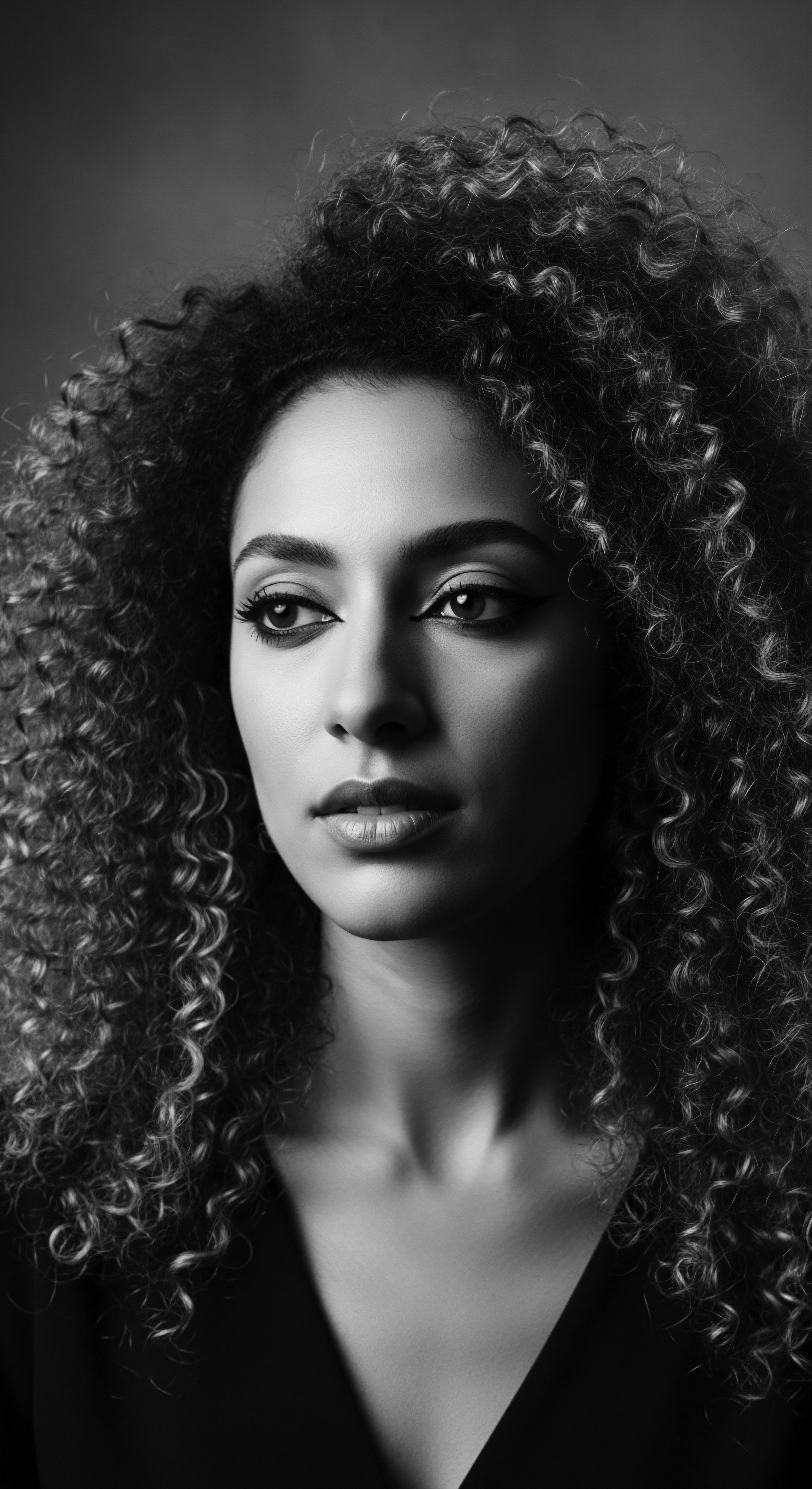
Ritual
The deep understanding of what biological structures form textured hair, though perhaps unspoken in scientific terms, manifested in centuries of ritual. These rituals, passed from elder to child, from hand to hand, were not mere acts of beautification. They were living conversations with the hair’s inherent design, a tender thread connecting communities across continents and time.
The hair, in its myriad coils and waves, became a canvas for identity, a symbol of resistance, and a vessel for spiritual connection. The very forms that emerged from the biological structures were celebrated and protected through meticulous, often communal, practices.

How Do Biological Structures Influence Styling Traditions?
The inherent elasticity and curl memory of textured hair, stemming directly from its biological architecture—the disulfide bonds, the asymmetrical keratin—made it uniquely suited for styles that held their form without extensive heat or manipulation. This lent itself naturally to protective styling, a cornerstone of textured hair heritage. Braids, twists, and locs, far from being recent trends, are practices with ancient roots.
For millennia, these styles protected the fragile ends of hair, minimized tangling (a direct challenge from lifted cuticles), and retained moisture. The act of sectioning hair for braiding or twisting, for instance, instinctively acknowledged the individual ‘clumps’ or bundles formed by hair growing from closely grouped follicles, respecting the natural flow dictated by its biological blueprint.
Consider the practice of Cornrowing, a technique found across countless African cultures and their diasporic descendants. Archaeological findings and historical accounts show women and men wearing intricate cornrow patterns dating back thousands of years. These styles were not only artistic expressions but served vital practical purposes ❉ reducing daily manipulation, preserving moisture, and signifying tribal identity or social status.
The very structure of the hair, with its propensity to coil tightly and hold a pattern, made such elaborate and enduring styles possible. Without the unique biological characteristics of textured hair, cornrowing as a protective and symbolic practice would simply not exist in the same way.

Traditional Tools and Their Biological Purpose
The tools crafted by ancestral hands were often simple, yet profoundly effective, speaking to an intuitive grasp of hair’s biological structures. Combs carved from wood or bone, with wider teeth, minimized breakage and respected the curl pattern. Pointed sticks or fingers served to section hair, preserving the integrity of the natural coils.
These tools, unlike many modern implements, were designed to work with the hair’s texture, not to force it into an unnatural state. They speak to a long lineage of innovation born from necessity and a deep respect for the hair’s natural inclinations.
- Wide-Toothed Combs ❉ These tools, often carved from wood or bone, minimized friction and breakage on hair with a naturally lifted cuticle, preventing snagging that could compromise the integrity of the hair shaft.
- Gourd Containers ❉ Used for mixing and storing natural elixirs like oils and butters, they ensured that nourishing substances were readily available to protect hair from environmental stressors and moisture loss, directly addressing the cuticle’s vulnerability.
- Hair Pins/Decorations ❉ Crafted from various materials, these not only adorned the hair but often served to secure complex styles, supporting the coil patterns and preventing unraveling.
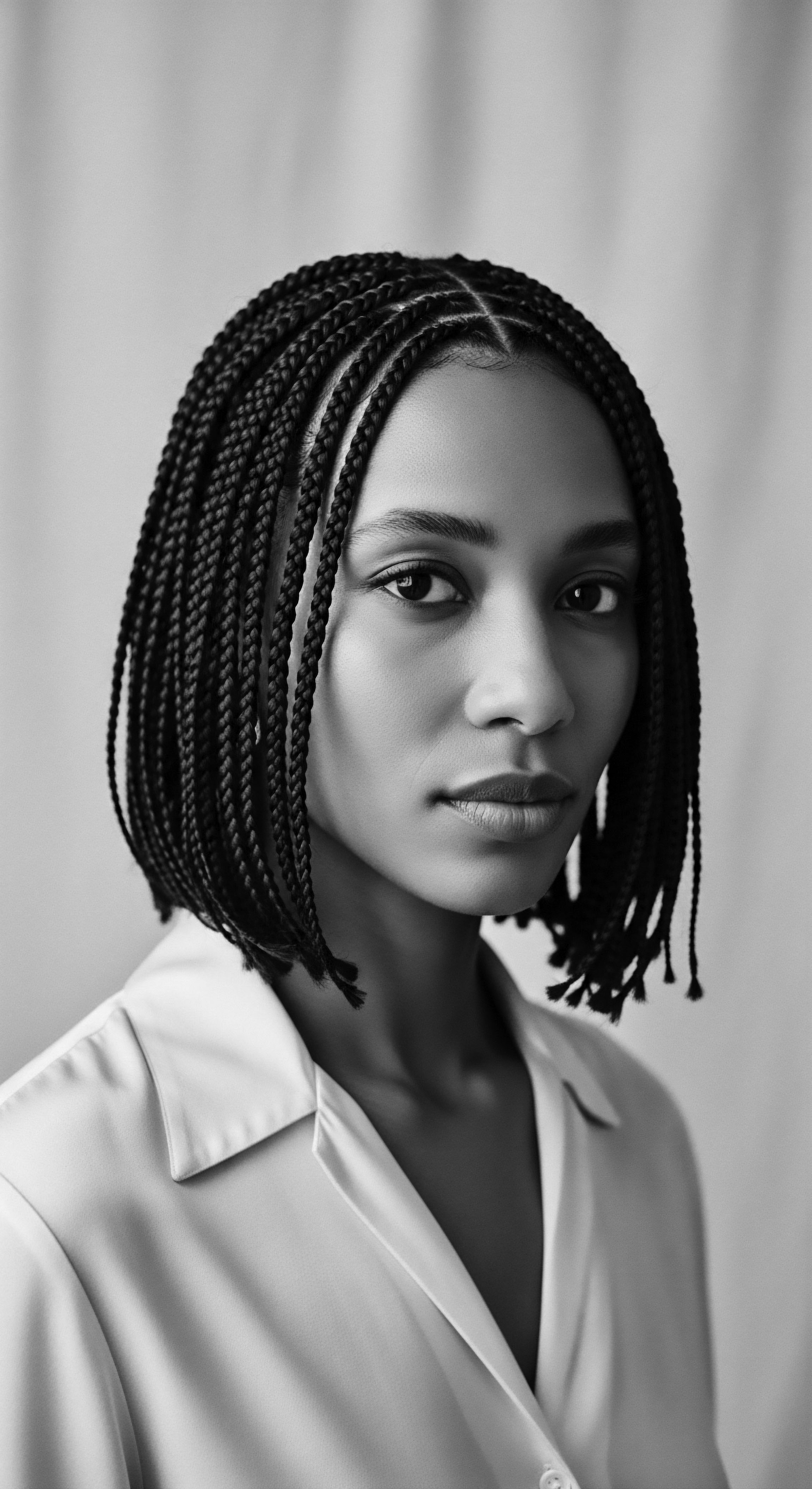
Cultural Symbolism and Hair’s Physicality
The biological ability of textured hair to be molded, braided, and intricately styled allowed it to become a powerful vehicle for cultural expression. In many societies, hair communicated age, marital status, wealth, and spiritual beliefs. The very act of styling became a communal affair, a space for storytelling and the transmission of wisdom. This communal element, the shared ritual of hair care, further reinforced its cultural significance.
The distinct ways hair coils and kinks allowed for unique sculptural forms, from towering updos to elaborate braided landscapes, each bearing meaning. This physical characteristic made it a prime medium for non-verbal communication within a community.
| Aspect of Care Moisture Retention |
| Ancestral Practices (Rooted in Biology) Application of natural butters (e.g. shea, cocoa) and oils (e.g. palm, coconut) to seal the cuticle, reducing evaporation. |
| Modern Understanding (Informed by Biology) Formulations with humectants and emollients, designed to penetrate the hair shaft and seal the cuticle, combating dryness inherent to lifted scales. |
| Aspect of Care Detangling |
| Ancestral Practices (Rooted in Biology) Finger detangling or gentle use of wide-toothed tools, often with water or natural slip-inducing plant extracts. |
| Modern Understanding (Informed by Biology) Conditioners with cationic surfactants to smooth the cuticle, reducing friction and tangles; specialized wide-tooth combs and brushes designed for textured hair. |
| Aspect of Care Protection |
| Ancestral Practices (Rooted in Biology) Protective styles (braids, twists, locs) to minimize exposure to environmental stressors and daily manipulation. |
| Modern Understanding (Informed by Biology) Chemical treatments to strengthen disulfide bonds, heat protectants, and continued reliance on protective styling methods. |
| Aspect of Care Understanding textured hair's biological structures consistently shapes both ancient and current care regimens, linking heritage with scientific insight. |
Ancestral hair practices instinctively addressed the unique biological needs of textured hair, transforming routine care into profound cultural ritual.
The evolution of styling techniques, therefore, directly mirrors the biological realities of textured hair. The ability of coiled and curly strands to hold shape, to shrink, and to defy gravity allowed for a distinct aesthetic language that spoke volumes. The resilience of these biological structures became intertwined with the resilience of the people, the hair acting as a silent, powerful testament to identity and enduring spirit.

Relay
The biological structures that form textured hair are more than just a scientific curiosity; they are a living inheritance, relayed from one generation to the next, shaping narratives of identity, beauty, and autonomy. This relay is not merely genetic; it is cultural, a continuous dialogue between ancestral wisdom and contemporary self-discovery. As we stand today, appreciating the intricate biology of our strands, we also acknowledge the profound journey our hair has undertaken through history, from being a source of pride and spiritual power to a target of colonial oppression, and back again to a symbol of liberation.
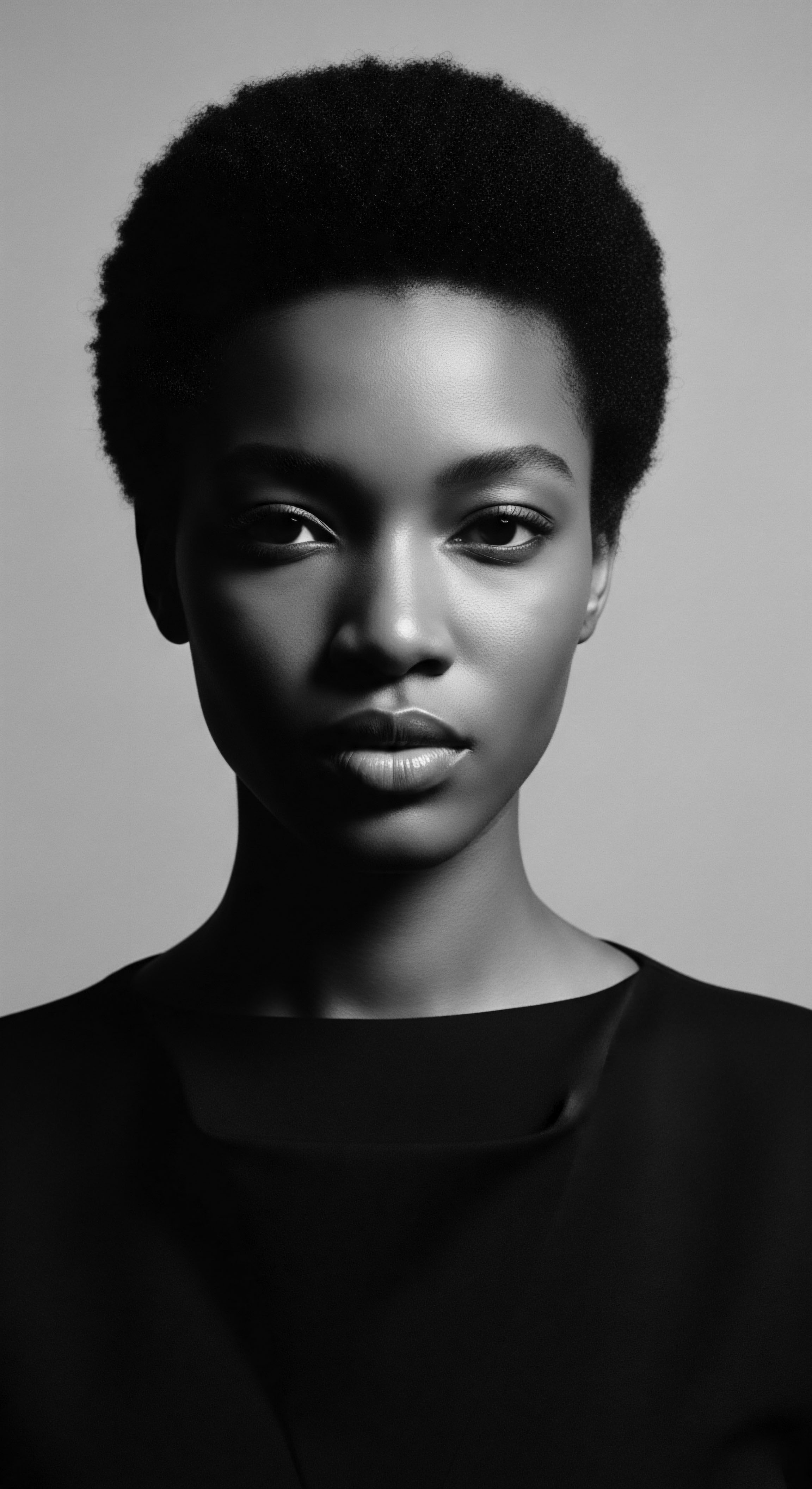
How Do Environmental Factors Influence Hair Structures Over Time?
While genetics primarily dictate the fundamental structures of textured hair—the elliptical follicle, the keratin distribution—environmental factors, including nutrition and climate, have always played a secondary, yet significant, role in the health and appearance of those structures. For ancestral communities, access to nutrient-rich foods, often cultivated locally, contributed to strong, vibrant hair. Diets rich in essential amino acids, vitamins, and minerals (components of healthy keratin) were implicitly understood as vital for overall well-being, including hair vitality. The arid climates in some ancestral lands also prompted the development of specific moisturizing and protective routines, as the hair’s naturally lifted cuticle scales would be more susceptible to dryness in such environments.
This interplay between biological predisposition and environmental adaptation formed the basis of traditional hair care, a knowledge system passed down orally and through practice. .
The understanding of how nutrient deficiencies or harsh environmental exposures could compromise hair’s structural integrity, leading to breakage or dullness, drove many traditional remedies. For example, the incorporation of certain herbs or plant oils, known for their restorative properties, directly supported the health of the hair’s protein matrix and its outer protective layer. This was not abstract science; this was a lived, practical application of botanical knowledge, deeply integrated into daily life.

Hair’s Structural Resistance and Cultural Resilience?
The very biological structures of textured hair, particularly its tendency to shrink and coil when wet, presented a perceived ‘challenge’ to European aesthetic norms, which prioritized long, flowing straight hair. This biological reality was weaponized during periods of slavery and colonization, as textured hair was often denigrated, deemed ‘unruly’ or ‘unprofessional.’ Yet, within Black and mixed-race communities, the hair, in its natural structural state, became a profound symbol of resistance and identity. The choice to wear one’s hair in its natural coils was a silent, powerful refusal to conform, a reclamation of inherent beauty and ancestral lineage. This act of defiance was intrinsically tied to the biological forms of the hair.
The Black Power Movement of the 1960s and 70s stands as a powerful historical example. The widespread adoption of the ‘Afro’ hairstyle, which celebrated the natural volume and coil of textured hair, directly challenged prevailing beauty standards and asserted a strong sense of racial pride. This wasn’t merely a fashion statement; it was a socio-political declaration, rooted in the biological ability of textured hair to stand tall and proud, unmanipulated by chemicals or heat designed to alter its fundamental structure.
The biological structures allowed for the physical manifestation of a political and cultural movement. It was a visible rejection of the idea that Black hair, in its natural state, was anything less than beautiful and powerful.
- Follicle Shape ❉ The elliptical or flattened shape of the follicle determines the coiling pattern, directly impacting how light reflects off the hair, its volume, and its susceptibility to shrinkage.
- Keratin Distribution ❉ The asymmetrical arrangement of ortho- and para-cortex within the hair shaft dictates the strength and flexibility of each curl, allowing it to hold intricate styles.
- Cuticle Layer ❉ The slightly raised scales of the cuticle, particularly at the curves, influence moisture retention and detangling, informing centuries of hydration-focused care practices.

The Scientific Mirror Reflecting Heritage
Today, advanced scientific understanding of textured hair’s biological structures continues to confirm what ancestral wisdom long held to be true. Microscopy and biochemical analysis reveal the very mechanisms behind the qualities our forebears knew instinctively. The knowledge that textured hair, due to its shape and cuticle configuration, is prone to dryness validates the ancient emphasis on moisturizing oils and protective styles. This modern scientific lens doesn’t diminish ancestral practices; it offers a deeper reverence for them, providing a language to articulate the ‘why’ behind the ‘how.’ It allows for a powerful synergy between contemporary research and timeless heritage.
The enduring legacy of textured hair lies in the unwavering connection between its inherent biological forms and the profound cultural narratives woven around its care.
This integration of old and new knowledge strengthens the communal bond with textured hair. It empowers individuals to care for their strands not just with products, but with purpose, knowing that each application of oil, each protective braid, echoes a long tradition. The relay of knowledge regarding what biological structures form textured hair, from ancient intuition to modern scientific validation, ensures that the soul of each strand continues to resonate, speaking of deep roots and boundless futures.
| Biological Structure Hair Follicle Shape |
| Scientific Understanding Elliptical or flattened, dictating the spiral formation of the hair shaft. |
| Historical/Cultural Significance (Heritage Link) Enabled distinct coiling patterns which were central to tribal identification, social status markers, and unique aesthetic expressions in diverse ancestral communities. |
| Biological Structure Keratin Asymmetry |
| Scientific Understanding Uneven distribution of orthocortex and paracortex, contributing to the hair's curl and elasticity. |
| Historical/Cultural Significance (Heritage Link) Allowed for the creation and retention of intricate protective styles like braids and twists, becoming a medium for artistic and communicative expression across generations. |
| Biological Structure Cuticle Layer (Lifted) |
| Scientific Understanding Outer scales tend to be more raised, particularly at curves, leading to increased moisture loss and tangling. |
| Historical/Cultural Significance (Heritage Link) Necessitated and informed the development of centuries-old moisturizing rituals, use of natural emollients, and nighttime protective practices, deeply embedded in familial and communal care traditions. |
| Biological Structure The study of textured hair's biology invariably leads back to a rich history of adaptation, creativity, and cultural meaning. |
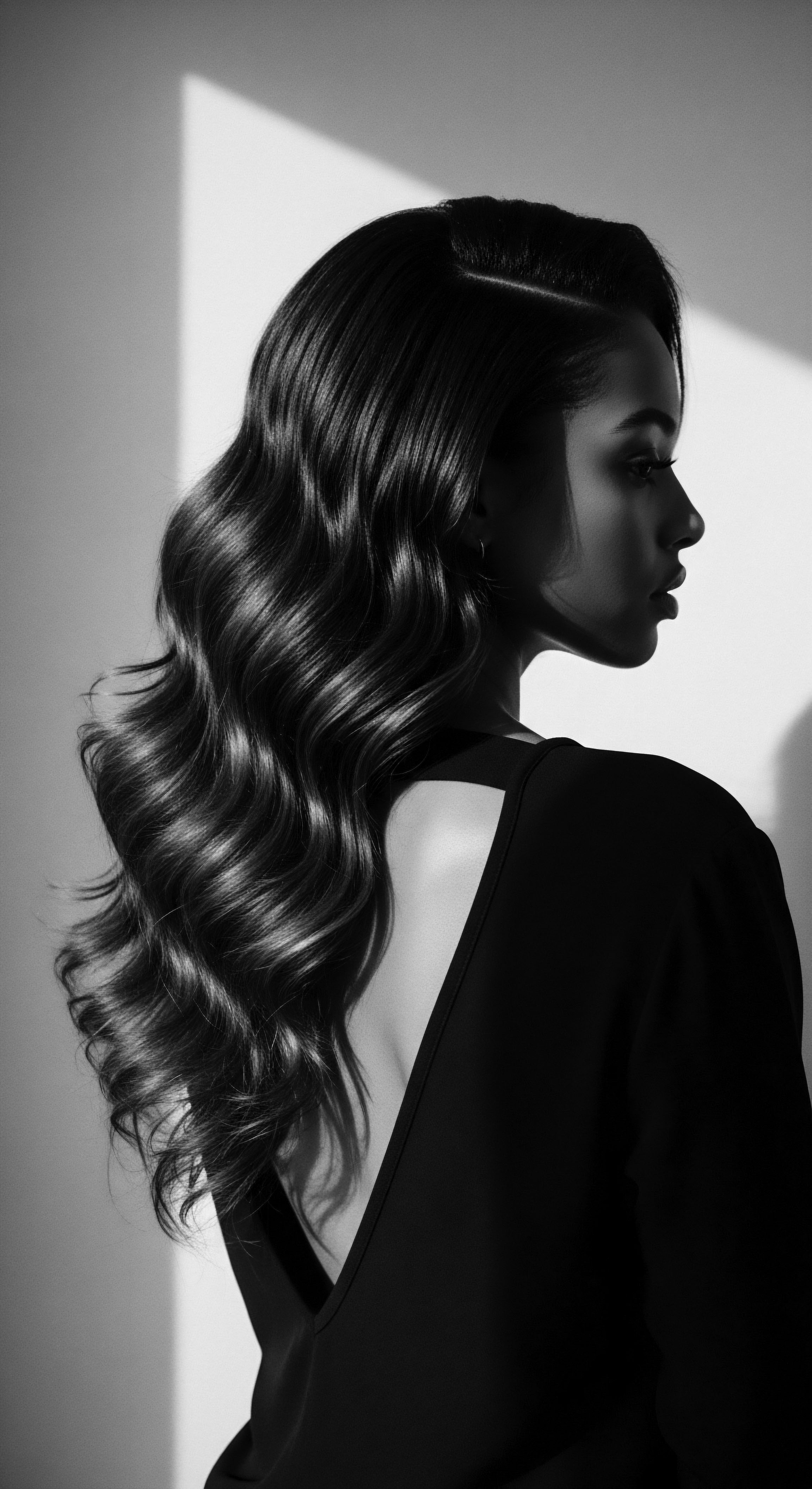
Reflection
The journey through the biological structures of textured hair is, at its core, a journey into the soul of a strand, a meditation on heritage itself. We see that the coil, the kink, the wave, are not accidents of nature but deliberate biological expressions, exquisitely crafted to tell stories spanning millennia. From the ancient wisdom that instinctively understood the needs of a lifted cuticle to the contemporary science that maps the subtle shifts in keratin, our understanding of textured hair remains a living, breathing archive.
Each curl holds the memory of hands that braided, spirits that resisted, and voices that sang. Our hair, truly, is an unbroken line connecting us to those who came before, a profound reminder that our beauty is rooted in the earth, shaped by our lineage, and destined to flourish, unbound and unyielding, into the future.
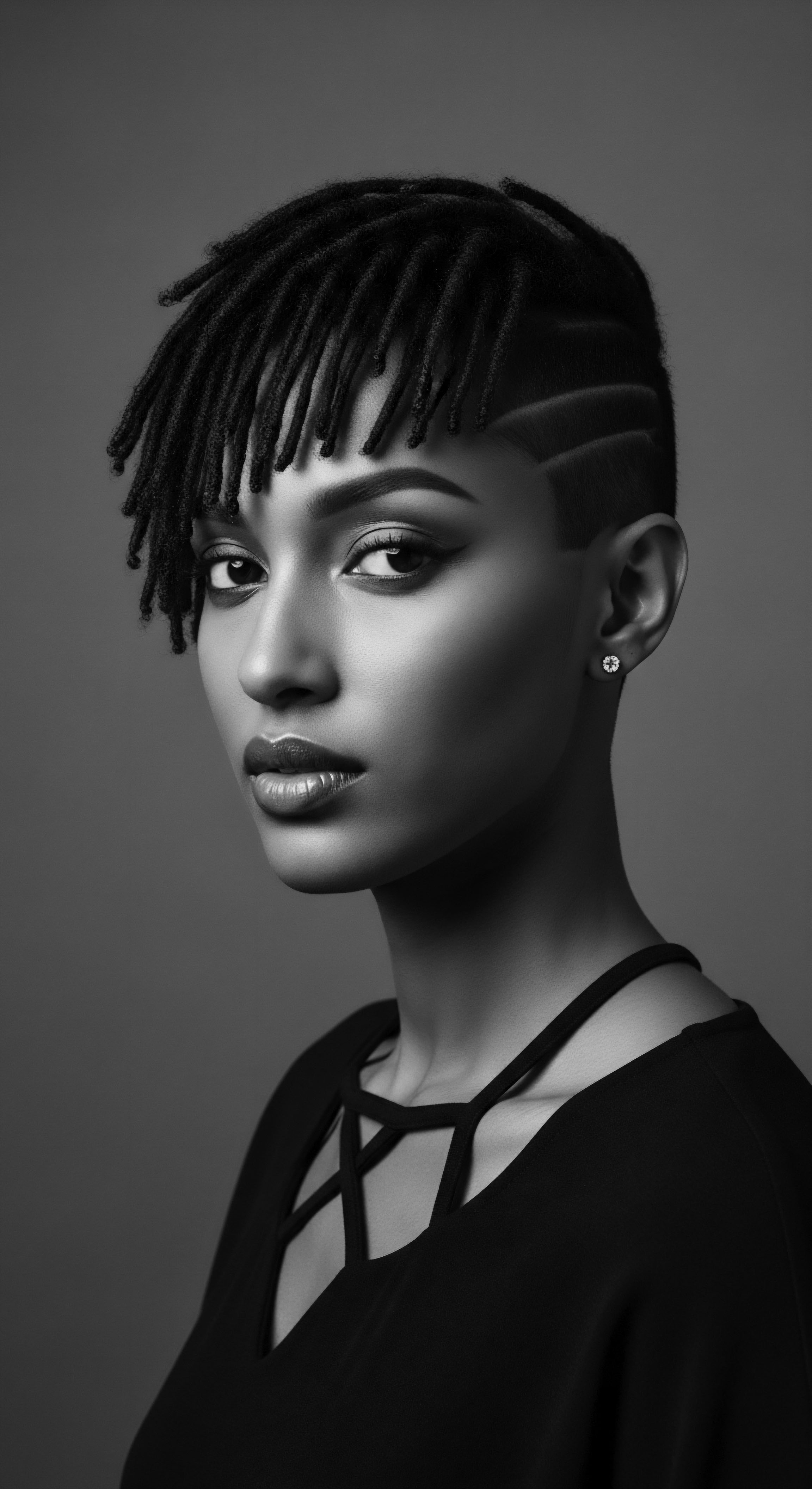
References
- Akihisa, T. et al. (2010). Triterpene alcohol and fatty acid composition of shea nuts from Ghana and their skin permeation. Journal of Oleo Science, 59(4), 195-201.
- Robbins, C. R. (2012). Chemical and Physical Behavior of Human Hair. Springer Science & Business Media.
- Smith, R. (2018). Textured Hair ❉ A Scientific Approach to Its Care and Management. Hair Science Press.
